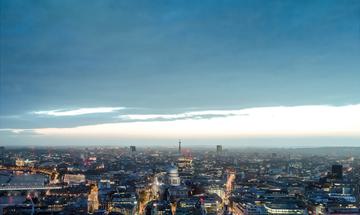Get Permission
Plan your shootWhatever location you are using, no matter how public it seems, it is likely you'll need to notify or get permission from somebody.
The impact of failing to inform relevant authorities could result in unnecessary police resources being deployed. It can disrupt your filming and the local community.
Public Locations
London is divided into 33 separate boroughs and each has its own Borough Film Service (BFS) to deal with filming requests for all local authority managed locations.
These include streets, estates, commons, town halls, schools, shopping centres and leisure centres.
Filming a public location?
Find out more about working with Boroughs.
When Public is Private
Some areas that seem like public streets, or have public access, are actually privately owned or managed.
London’s ‘public’ areas are managed by a number of agencies – you can find contact details for many of them here:
Organisations and Agencies List
Some key areas that have public access but always need filming permission are:
- The Royal Parks
- Trafalgar Square
- Parliament Square
- The South Bank
- Canal and River pathways
- Train and Tube stations
Small Crew Street Filming
For crews of 5 people or fewer with hand-held equipment filming on the street is quiet straight forward.
Find out more about Small Crew filming
Popular Landmarks and Private Locations
To film in private locations such as residential properties, you will need to apply directly to the property owner.
If you are filming in a flat or on a housing estate it may be owned by a Housing Association or council and you will need to contact ALL relevant parties.
Unsure who owns a location? Search the Film London Directory or contact our locations team: locations@filmlondon.org.uk
With any private location or interior (including private streets, parks and markets) you will be dealing with Location Representatives directly and will require permission.
If you are shooting around specific London Landmarks, you will find it useful to refer to our Popular Locations & Camera Position Maps.
These are comprehensive and downloadable PDF's, identifying exactly the camera angle you may be considering and who you need to make direct contact with. This is vital as there are areas of public access that are privately managed.
Filming Buildings
Filming the exterior of a building does not infringe its copyright. This means that you do not need copyright from the building's owner to film its exterior but you may need to get permission from the relevant authority or property owner based on where you have physically placed your camera in order to shoot.
A building could also be considered to represent an individual, company or institution so you should be careful not to use this association to either endorse or exploit any product or service; or in a way that might defame such individual, company or institution.
Find out more about Filming Buildings
Filming People
There are various things to consider when filming people, including privacy, data protection and defamation.
Find out more about Filming People
Aerial Filming and Drones
There are various permissions and considerations in order to operate a drone for aerial filming in London.
Find out more about Aerial Filming
Filming for Social Media Platfoms
It is possible that filming permission may be required if you are filming for social media platforms. Things to consider are whether the content is being made for commercial purposes, will members of the public be featured, are you going to be causing an obstruction to the public highway.
Find out if you need permission for your shoot
Get Insurance
All filming also requires public liability insurance. You need proof of this in order to receive permission to film or carry out any commercial photography.
This insurance covers the legal responsibilities of your production if your activities cause injury to a third party or damage to property.
Find out more about Media Insurance
Make sure it's legal
We can help you with information about filming people and buildings, working with the police, stunts, health and safety and child performance licences
Film London's Production Facilities Map
View resources available in the capital via this interactive map. This map contains:
- Unit Bases (Purple Icons with 'P')
- Production Offices (Red Icons)
- Studios (Orange Icons)
- Alternative Studios (Purple Icons with Factory)
- Small Studios (Yellow Icons)
- Crowd Holding & Green Spaces (Green Icons)
- Large Spaces/Storage Potential (Dark Green Icons)
- Borough Film Services (Blue Diamond Icons)
- Accommodation/Hospitality (Dark Blue Icons)


